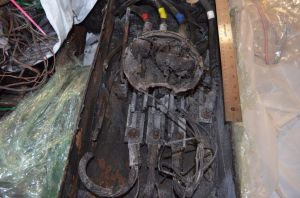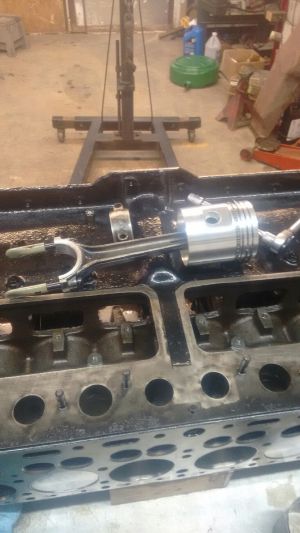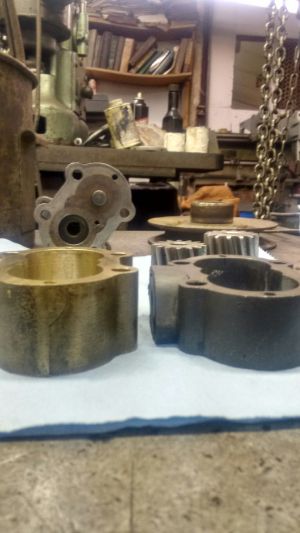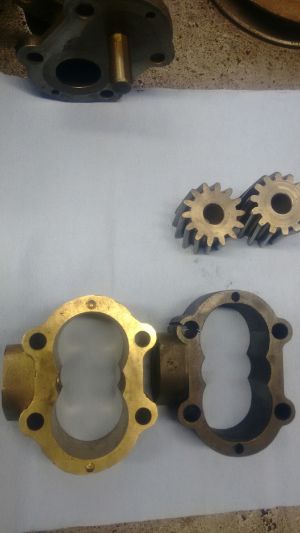- Home
- About Us
- Join/Renew
- Member Benefits
- Member Pages
- Log In
- Help
- Museum Store
I am in, David, for the ’29 Club Brougham.
Make that disengaged, as in pushed in.
Still recovering from 3 hours of bone surgery, sorry…
If the “whrr” is identical in 1st and 2nd gear, it is likely not the transmission, but still could be the clutch, flywheel, or possibly, but not likely the throwout bearing. (that makes noise with the clutch engaged) It may be crazy, but put a microphone in the engine compartment and record the noise at various speeds. If necessary, change the location of the mic.
David Coco also owns a Cord. Pipe up, David!
Thanks to Karl and James Powell for their input. Time to teach the kids how to do some detail work!
Richard, we love to live through your restoration, especially knowing we don’t have to shell out the cash you do!
David, I beat you at 8 years. Should have had 9 pistons made. Those Aries pistons are a work of art.
Do what you can to clean all the contacts in and around the generator and the cut-out, especially the grounds. If you got that much voltage, it is sounding like an open field circuit condition like you would see on a 50’s generator system.
It is clear, but what about something like glycerin? Doesn’t it have a SG in the 3 range, and can’t it be dyed?
Robert’
You are correct. Split rims mean there is one part of the metal rim that literally splits open so the tire can slide over the reduced circumference. Once one side is in place, you feed the tube into the inside of the tire, then slide the other side of the tire over the rim. Then you return the split rim back to its original circumference.
The lock ring type tires were common on trucks back in the 70’s. I can remember changing these tires, and when inflating them, we left the shop until we heard a pronounced POP, then we went back and filled the tire to the proper pressure. I have seen one of these rings take off and embed itself in the ceiling. Not a pretty sight. I worked for a roofing company. Most real shops had a cage used to protect mechanics when replacing tires. Not us.
Universal should have no trouble handling your tires.
The tires on my ’29 are from the 70’s, and will need replacing when (if) I get my engine back. Coker is having a sale on the Firestones (7.00 by 19) in May. Any suggestions on brands? I have heard of issues with Lesters, but nothing good or bad about Firestones. Are the liners and tubes Coker sells any good? Other thoughts and/or comments?
Grant,
I have done a number of fire related reviews over the last 10 years. Different insurance companies treat insureds differently, but one universal trait is that they will try to short you, and you cannot trust their experts. It is well worth a few bucks to hire a fire expert to at least review the fire marshall’s report, and then, as you appear to be doing, get an independent appraisal of the damage. The other thing you need to do is be aware of the deadlines for claims and other rebuttals, etc. They will delay as much as they can, and then deny when deadlines are missed. Then expect to be dropped at the most inopportune time. Bet money it will happen.
Good luck, and don’t give up until you are satisfied.
Nice work, Eric. What make and model is the distributor you are using?
If you were posting a picture, it did not work.
Sounds like Craig has run through the diagnostic sequence pretty well, but if you have a 668E and only one coil, and one set of points, you have a very large 4 cylinder engine and four single cylinder air compressors.
This is your phrenometer after its first megger test. Nice engineering work .

While we are at it, here is a picture of the Aries piston set we installed. Egge pistons have been known to have issues. These are a work of art. I should have ordered 9 of them so I could put one in a display case.

Another view of the two pieces. Greg, if Mitch hasn’t called you, he will. Still trying to find a machine shop interested in making these parts.

Greg is right. Here is a picture of my ’29 oil pump middle piece, and a brass replacement for a ’30 model. Greg and I are trying to find someone who will reproduce the middle sections. The ’29 and the ’30 (and later?) pumps are different, both in the bolt locations, and in the height of this piece. The ’29 is an inch thick, the ’30 is 1.25 inches thick. We put some clay on the bottom of the ’29 pump, and test fit the pan. It didn’t have enough clearance to accept the taller 1.25 inch pump, so we will have to make both for all the cars still needing to replace the pot metal pieces. Take a look at the picture: the brass is the 1,25 inch replacement part, the cracked part is what we pulled out of my engine.

I am also at 7 years, thank you. It is almost done, says he. The pictures also show it to be close. As I have to have the first of my two shoulder sockets replaced in two weeks, it looks like it won’t be ready for summer driving. Hopefully Hershey.
Craig,
Let me know what you need. They are mostly TV tubes, but there are a bunch of radio ones as well. Antique Electronic Supply in Arizona is also a great source for tubes, coils, capacitors, etc. They even have the needles for the old Victrolas.
David,
I know a guy who can rebuild your Cord engine for you. He’s good but a bit slow.
Ken,
I bought out an old time TV and radio repair shop in the 70’s. Still have at least 5,000 new tubes dating back to the early 20’s, even 4 pin jobs. My wife is not happy…
Couple of Comments.
I had a Hupp Aerodynamic that went to Ga Tech a few years back (Raymond Loewy designed car). It had a three position headlight switch for city, country, and High beam, or something like that. Did Pierce ever have this same three position headlight system? Was it available on other cars?
David,
Could you please send me a pdf of the article? My eyes can’t read that detail from the picture.
All,
I saw David’s Cord. The current engine runs too well to replace it. I would NOT want to deal with that transmission. It is pretty clunky.
Bob
